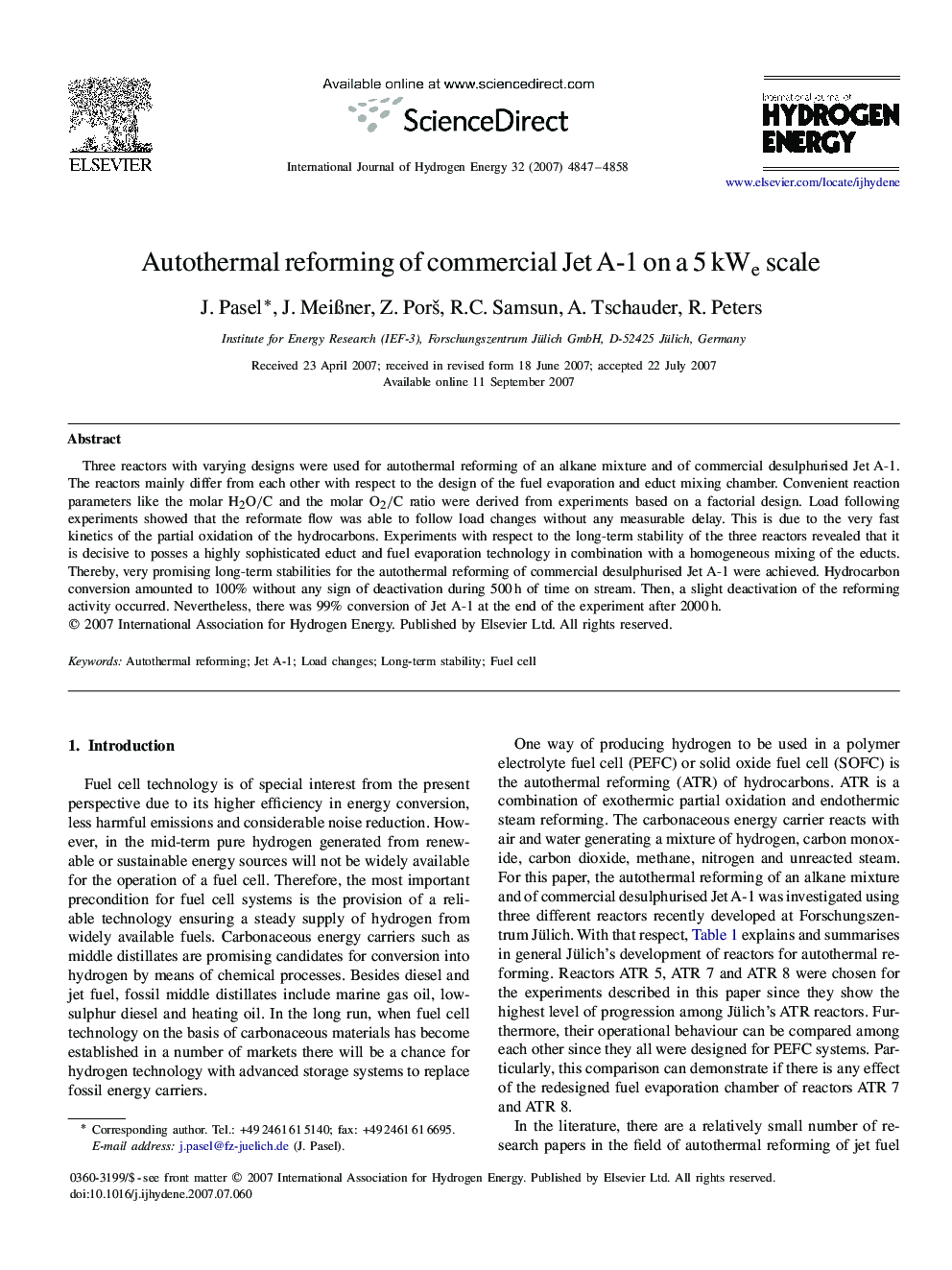| Article ID | Journal | Published Year | Pages | File Type |
|---|---|---|---|---|
| 1283774 | International Journal of Hydrogen Energy | 2007 | 12 Pages |
Three reactors with varying designs were used for autothermal reforming of an alkane mixture and of commercial desulphurised Jet A-1. The reactors mainly differ from each other with respect to the design of the fuel evaporation and educt mixing chamber. Convenient reaction parameters like the molar H2O/CH2O/C and the molar O2/CO2/C ratio were derived from experiments based on a factorial design. Load following experiments showed that the reformate flow was able to follow load changes without any measurable delay. This is due to the very fast kinetics of the partial oxidation of the hydrocarbons. Experiments with respect to the long-term stability of the three reactors revealed that it is decisive to posses a highly sophisticated educt and fuel evaporation technology in combination with a homogeneous mixing of the educts. Thereby, very promising long-term stabilities for the autothermal reforming of commercial desulphurised Jet A-1 were achieved. Hydrocarbon conversion amounted to 100% without any sign of deactivation during 500 h of time on stream. Then, a slight deactivation of the reforming activity occurred. Nevertheless, there was 99% conversion of Jet A-1 at the end of the experiment after 2000 h.
